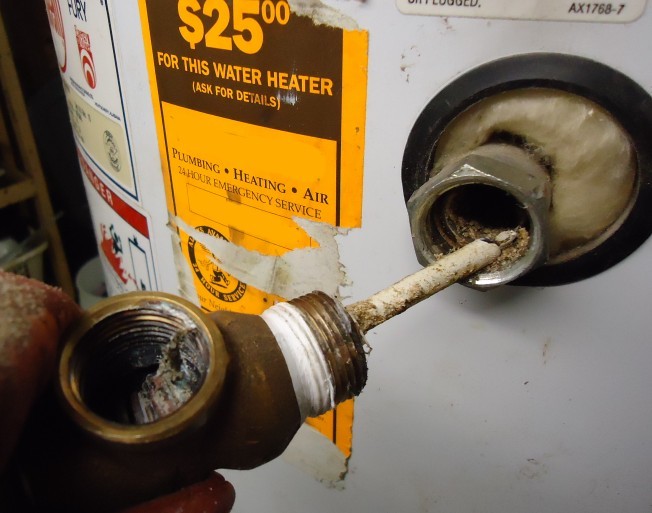This article which follows in relation to How to Maintain a Hot Water Heater in a Few Simple Steps is rather fascinating. Have a go and draw your own results.

Warm water is essential for daily comfort, whether it's for a refreshing shower or cleaning dishes. To ensure your hot water system runs efficiently and lasts longer, routine upkeep is crucial. This write-up gives sensible tips and insights on how to maintain your home's hot water system to avoid disruptions and expensive repair work.
Introduction
Maintaining your home's hot water system might seem challenging, yet with a couple of straightforward actions, you can guarantee it runs efficiently for several years ahead. This overview covers whatever from recognizing your warm water system to do it yourself maintenance suggestions and understanding when to contact expert help.
Importance of Keeping Your Warm Water System
Routine maintenance not only extends the lifespan of your warm water system yet additionally guarantees it operates efficiently. Neglecting upkeep can cause reduced efficiency, higher power costs, and also premature failure of the system.
Indicators Your Warm Water System Requirements Maintenance
Knowing when your warm water system requires interest can prevent major concerns. Watch out for indications such as inconsistent water temperature level, weird sounds from the heater, or rusty water.
Purging the Hot Water Heater
Flushing your hot water heater gets rid of sediment buildup, boosting effectiveness and prolonging its life.
Monitoring and Changing Anode Rods
Anode rods protect against deterioration inside the storage tank. Inspecting and replacing them when broken is vital.
Complex Concerns Needing Professional Assistance
Examples consist of major leaks, electrical issues, or if your water heater is constantly underperforming.
Routine Specialist Maintenance Benefits
Specialist maintenance can consist of extensive examinations, tune-ups, and ensuring conformity with safety criteria.
Examining and Readjusting Temperature Setups
Changing the temperature settings ensures ideal efficiency and safety.
Do It Yourself Tips for Maintenance
You can do several maintenance jobs on your own to keep your hot water system in leading problem.
Checking for Leaks
On a regular basis evaluate pipes and connections for leakages, as these can bring about water damage and higher expenses.
Recognizing Your Warm Water System
Prior to diving into upkeep tasks, it's practical to understand the fundamental parts of your hot water system. Usually, this consists of the water heater itself, pipelines, anode poles, and temperature controls.
Regular Monthly Upkeep Tasks
Regular regular monthly checks can help capture minor problems prior to they rise.
Testing Stress Alleviation Valves
Testing the pressure relief valve ensures it works appropriately and prevents excessive pressure accumulation.
Protecting Pipelines
Protecting warm water pipelines minimizes warmth loss and can conserve power.
When to Call a Specialist
While do it yourself upkeep is beneficial, some concerns call for specialist expertise.
Verdict
Normal maintenance of your home's warm water system is crucial for efficiency, longevity, and expense savings. By complying with these pointers and recognizing when to seek professional help, you can guarantee a trustworthy supply of hot water without unforeseen disturbances.
How to Maintain an Instant Hot Water Heater
Before tinkering with your hot water heater, make sure that it’s not powered on. You also have to turn off the main circuit breaker and shut off the main gas line to prevent accidents. Also turn off the water valves connected to your unit to prevent water from flowing into and out of the appliance. 2. When you’re done, you have to detach the purge valves’ caps. These look like the letter “T” and are situated on either side of the water valves. Doing so will release any pressure that has accumulated inside the valves while at the same time avoid hot water from shooting out and burning your skin. 3. When the purge valves’ caps are removed, you have to connect your hosing lines to the valves. Your unit should have come with three hoses but if it didn’t, you can purchase these things from any hardware or home repair shops. You can also get them from retail stores that sell water heating systems. Read the user’s manual and follow it to complete this task properly. When the hosing lines are connected, open the purge port’s valves. 4. You should never use harsh chemical cleaners or solutions when cleaning your unit. Make use of white vinegar instead. It should be undiluted and you’ll probably use about 2 gallons. 5. Now flush your water heater. This task should probably take about 40 minutes. We can’t give you specific directions for this because the procedure is carried out depending on the type, model and brand of your heater. With that being said, refer to the user’s manual. 6. When you’re done draining the unit, you have to turn off the purge port valves again. Remove the hosing lines that you earlier installed on each of the water valves. Put the valve caps (purge port) back in their respective places and be very careful so as not to damage the rubber discs that are found inside these caps. 7. Now that everything’s back in place, check your user’s manual again to find out how to reactivate your water heating system. 8. Once it is working, turn one of your hot water faucets on just to let air pass through the heater’s water supply pipes. Leave the tap on until water flows smoothly out of it. https://www.orrplumbing.com/blog/2014/september/how-to-maintain-an-instant-hot-water-heater/

We were introduced to that article on Water Heater Maintenance Tips You Can't Afford to Forget from a good friend on our other site. Appreciated our piece of writing? Please quickly share it. Let others check it out. I praise you for your time. Please come visit our site back soon.
Schedule Estimate